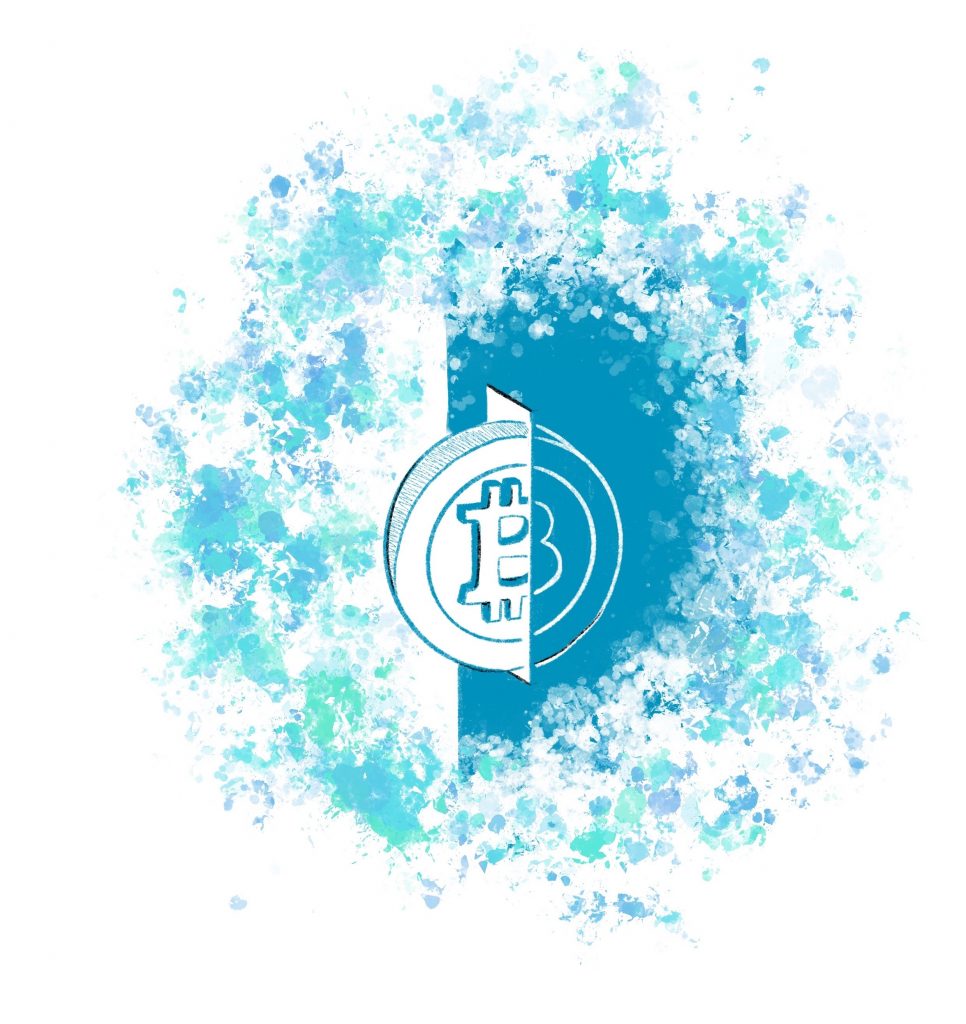During the Roman Empire, the priests who worked in the temples protected the savings of wealthier citizens. Clerics were considered devout and honest, which is why they were entrusted with the guarding of treasures, at a time when coins made of various metals were used. There are records showing that temples also lent money, in addition to keeping it safe. This was the beginning of the entities we know today as banks.
Although these practices were carried out in other civilisations, the Roman empire was the first to move treasures to their own buildings, even creating laws that protected bankers. Failure to comply with payment was considered a crime, and Julius Caesar even gave permission to seize land and property to those who did not pay what was owed to them.
Approximately two millennia later, the banking sector is still quite similar, at its core, to Augustus’ empire. Today, as 2000 years ago, banking is essentially based on two pillars: saving and lending money.
In what concerns granting credit to their customers, banks must consider several factors that can impact the result. Among these factors is the associated risk, i.e., the probability that the investment made by the bank will result in an unfavourable scenario.

Technology in risk measurement
Natixis, a French multinational in the financial sector, sought INESC TEC’s support for the development of a solution that could optimise the analysis of financial risk. “Banks like Natixis monitor certain financial indicators, analysed daily by economists to find any outliers that may, in some way, indicate some kind of issue. For example, a sudden change in the exchange rate between two currencies could trigger atypical values in risk indicators”, explained João Mendes Moreira, researcher at INESC TEC’s Laboratory of Artificial Intelligence and Decision Support (LIAAD).
The monitoring of risk indicators is typically done by financial analysts, but the large volume of data that banks deal with nowadays makes this task too time-consuming, as confirmed by the researcher in the first interaction with the French multinational. “The number of indicators reached more than one million. There were huge amounts of data, which was very painful work for analysts. The work was carried out visually, using the bank’s information system, which forced those responsible for this task to go through vast lists of information. Visually, it was a very tiring job”, added João Mendes Moreira.
The scenario described above motivated the bank to seek a technological system capable of facilitating the analysis of risk indicators. “We developed a system that uses machine learning methodologies and supervised techniques, in order to try to understand improper variations in financial risk indicators, associated with higher-risk financial investments, such as derivatives and other similar products”, concluded the researcher. The bank purchased the exclusive rights of the technology solution developed, which is currently implemented.
In this case, technology and innovation served a very specific purpose and tried to address a problem that the banking sector faces today. But this was just one example of technological intervention in the financial sector, i.e., fintech.

Technology in cost reduction
Fintech is the term resulting from the combination of the words finance and technology and represents financial activity, including operations typically carried out by financial institutions, using novel technologies that allow the new and improved provision of services. Technology in the financial sector is everywhere, and no longer just behind the counter. By the way, when was the last time you needed to go to a bank counter? New technologies increasingly impact the customers of the entities in the banking sector.
In Portugal, the most paradigmatic example was the emergence of the MBWay service, a mobile application developed by SIBS that enabled access to various financial operations using smartphones. The technology rivals the services provided by traditional banking, since users can transfer money using a phone number, instantly and free of charge (within certain limits).
This is just one of many financial services stemming from the integration of new technologies. Paypal, Transferwise, Kickstarter, Venmo, Revolut, Apple Pay, Google Pay, or even the Portuguese Raize, all have impacted the lives of their users over the years.
With the main objective of making financial regulators and supervisors aware of the importance of new technologies in the sector, Paula Brito and Carlos Alves, researchers from LIAAD and the Center for Economics and Finance at University of Porto, respectively, collaborated on the European FinTechproject. “These new technologies allowed the emergence of certain operators who came to challenge financial institutions that were already part of the system, particularly in terms of transactions. More specifically, financial activity, money transfers, payments, etc. New operators can enter this sector quite easily”, said Carlos Alves.
Although technology in the financial sector does not represent, for the most part, the emergence of new types of operations, it certainly brings greater convenience and lower intermediation costs. These costs are “a latent and patent problem, and the financial system is always trying to find ways to provide the services that are being supported by other operators”, added the researcher. According to Paula Brito, “new technologies have made it possible to process more data, and more quickly, which also contributes to reducing intermediation costs”.
However, the emergence of new operators is not the only outcome of the adoption of new technologies. Traditional banking was also able to adapt. “Nowadays, traditional banking resorts to technology at two particular levels: customer relations and banks’ internal operations. People hardly go to the bank nowadays, and the digitalisation of process led to safer internal procedures”, explained Carlos Alves.
Even the capital markets can benefit from the implementation of new technologies like blockchain, which, as a distributed ledger technology, makes it possible to carry out and record electronic transactions in a similar way to accounting records. “Blockchain could be very useful in the operations’ backoffice. Not so much at the transactions’ level, since they are carried out in nanoseconds, but regarding the settlement of operations, the transfer of shares from those who sell to those who buy, and the maintenance of the owner’s register. I believe that technologies may be of great help in the future”, continued Carlos Alves.
Besides raising awareness of the importance of new technologies among regulators and supervisors, the project also proposed to “level the knowledge of the different regulators, providing them a platform and skills to be on an equal footing in terms of technological level in the exercise of their duties”, explained Paula Brito. In addition to the scientific aspect, the project included training actions that took place at the headquarters of regulators in various countries, focused on Big Data, Artificial Intelligence and Blockchain. In Portugal, the sessions took place at the Portuguese Securities Market Commission, with the participation of Banco de Portugal and the Insurance and Pension Funds Supervisory Authority.

Technology in decentralisation
“One of the best use cases for blockchain is cryptocurrencies. We have managed to create coins like Bitcoin or Etherium, in which there is no central entity that manages the issuance and governance of that currency. It is completely distributed, no one has to trust anyone; transactions take place between each person who participates in the system almost immediately, with low costs”, mentioned Francisco Cruz, researcher at INESC TEC’s High-Assurance Software Laboratory (HASLAB).
Despite the significant advantages of blockchain technology and the numerous attempts to apply it, in order to address different issues, most of these projects find it difficult to cross the barrier between the real world and the digital world. “If we used blockchain to control the supply chain of a product, we could achieve a reliable record of its path from its origin, and we could know for sure its characteristics. We could have an immutable record, but how do we guarantee that what was written corresponds to the real world?”, asked Francisco Maia, also a researcher at HASLAB.
Francisco Cruz and Francisco Maia developed a cryptocurrency wallet called KeyRuptive. Cryptocurrency wallets work like a bank account for cryptocurrencies. However, they are very different in terms of security, since in the case of cryptocurrencies, the burden of responsibility for keeping the capital safe is the full responsibility of the holder, and there is no institution that performs said role. “When we create a cryptocurrency wallet, we have a private key, usually made up of 12 words, which gives us access to our funds. If a hacker accesses this key, we’ll lose all our funds”, explained Francisco Cruz.
Keyruptive’s story began in 2015, when the team submitted a patent application for a technology capable of storing data in a very secure way. However, it was only in 2017 that they decided to use this potential and apply it to a problem identified. “We noticed that one of the problems was the storage of the private key; and in that precise moment, our idea came up. We had a very secure information storage technology that involved reliable distribution, and where information is stored in various cloud storages”, said Francisco Cruz.
One of the ways to manage private keys today is using a service that manages them, a very easy-to-use solution, but not very secure. The opposite is the use of physical wallets (a kind of flash drive) that are very secure, but quite difficult to use. Keyruptive aimed to bring together the best of these two approaches. “In our application, 99% of the time, the private key is not stored anywhere. It’s not on our phones or on the cloud. It only materialises temporarily when a transaction is made, and then it is deconstructed into distributed data. At the same time, we were able to guarantee convenience – because it is a mobile application that allows us to make transactions whenever we want – and security, since if we lose our phone, or even if one of the cloud storages is compromised, the funds remain safe.” explained Francisco Maia.
This was followed by the development of a prototype and an investment round. Despite the media coverage surrounding cryptocurrencies, the commercial aspect of the project brought some challenges. “Right now, we are trying to understand what’s our next step: either attempting to launch the portfolio with an investment round, licensing the technology so that other people can develop their own portfolios, or licensing for purposes other than the portfolio”, stated the researcher.
Cryptocurrencies are currently living their hype. There are many projects, new currencies and attempts to make the dream of a universal, decentralised, low-cost payment system come true. “There are also a lot of frauds and scams, but it seems to me that taking a position today on whether cryptocurrencies are good or bad seems rather premature,” he said.
The whirlwind of projects arises mostly from the need to overcome some obstacles that still exist in the financial sector which, despite advances, still presents a level of technological development far below other sectors. “It’s too early to know if the way to get there will be A, B or C. It’s probably Z, which we haven’t achieved yet. We are still at the very beginning, and this Z path will probably encompass ideas from this movement and notions from the traditional sector. We will probably witness the remodelling of the more traditional systems used for financial management”, mentioned Francisco Maia.
Francisco Cruz also predicts the future of cryptocurrencies. “We are heading towards a future with cryptocurrencies, but which will likely be regulated by central banks; moreover, there will be digital assets such as bitcoin, which will be merely speculative. I think bitcoin will never be a means of payment as it was initially thought. It will perhaps become a store of value, almost like gold in the physical world. Banks are likely to start approaching the world of cryptocurrencies, and a fusion between the two worlds is expected”.
Although there is still a lot in common between banking from the 3rd century and what we know today, there have been several innovations, at different levels, over recent years. We use sophisticated methodologies to assess risk rather than asking God’s blessing on borrowed capital. Ancient temples are now smartphones in the palm of your hand. The future of the financial system is anyone’s guess, but technology will certainly be part of the envisaged financial revolution.




 News, current topics, curiosities and so much more about INESC TEC and its community!
News, current topics, curiosities and so much more about INESC TEC and its community!